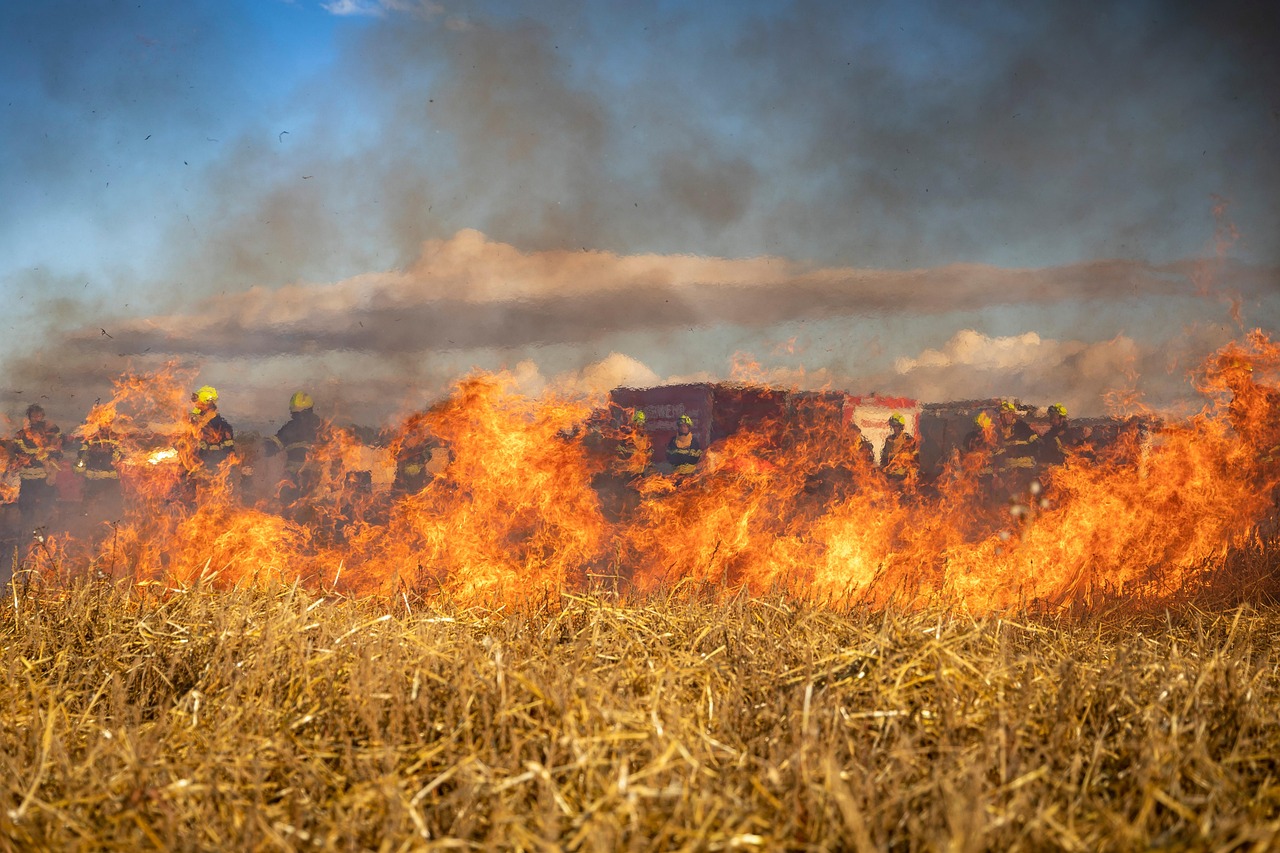Scientists have found that during severe heatwaves, conditions that normally protect moorlands and peatlands from devastating wildfires can suddenly collapse, leaving them vulnerable to extreme fire behaviour never before experienced in these regions.
The discovery comes from researchers who measured fuel moisture – essentially how dry or wet vegetation and soil become – across the UK over three years, including during the record-breaking July 2022 heatwave when temperatures exceeded 40°C for the first time in British history.
 Under normal conditions, different parts of these landscapes dry out at different times and rates. Dead plant material dries quickly with hot, dry weather, but the living heather stays relatively moist thanks to seasonal growth patterns. Meanwhile, carbon-rich peat deep underground stays waterlogged. This staggered drying pattern naturally limits how bad fires can become.
Under normal conditions, different parts of these landscapes dry out at different times and rates. Dead plant material dries quickly with hot, dry weather, but the living heather stays relatively moist thanks to seasonal growth patterns. Meanwhile, carbon-rich peat deep underground stays waterlogged. This staggered drying pattern naturally limits how bad fires can become.
But during the extreme July 2022 heatwave, everything changed. All the fuel types dried out simultaneously and dramatically – to levels never recorded before in the three-year study.
Dead heather reached just 4% moisture content compared to 18% in a normal July. Living plants that should have been protected by summer growth were instead stripped of moisture. Even peat, which normally resists drying, dropped to dangerous levels in some regions.
Fire simulations showed that under such heatwave conditions, flames could spread more than four times faster than in typical July weather, while the probability of fire ignition skyrocketed to 87%, compared to less than 11% in normal conditions.
Further bad news is that these regions, from the Scottish Highlands to Southwest England, have no history of such intense fires. The plants and ecosystems have evolved to cope with moderate burns, not infernos. Moreover, the research suggests these conditions, now considered to be extreme, could become routine within 25 years as climate change intensifies heatwaves.
For fire services and land managers already stretched thin by the 2022 wildfires, the findings paint a challenging picture. Traditional firefighting methods will become inadequate during these new extreme conditions. The researchers warn that Britain must develop new landscape management strategies and ensure firefighting services receive proper resources to cope with a transformed fire landscape.
Dr Katy Ivison from the University of Birmingham and first author of the study said: ‘The three-year survey our team conducted has found that there is a normal variation in moisture content between the three fuel sources we studied that by and large balances itself out. Dead heather is affected by weather conditions during the summer but the living heather generally tends to take on more moisture in the summer months during green up, after seeing drier conditions during the spring.
‘The extreme heat of the 2022 heatwaves, and further dry conditions in the last few years including record breaking weather in 2025, are likely to become the new normal in the UK. This extreme heat leaves the UK at much greater risk of wildfires that are a threat to human life, our homes, infrastructure, ecosystems and their wildlife.’
Professor Nick Kettridge from the University of Birmingham and senior lead author of the paper said: ‘We may be substantially underestimating the danger posed by wildfire through the summer, considering the risk to be low in areas of the country that have been historically resistant to summer fire. But heatwaves this year as well as 2022 have demonstrated the threat we face.’
Photo: fish96
















Leave a Reply